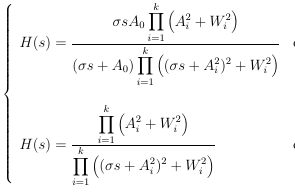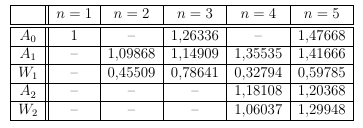Rational Approximation of Gaussian LPF
But I want to get more close aaproximation as rational function expression.
My book shows only hint for it.
Is there anyone who know it ?
Nuhertz Filter Solutions does a good approximation, slightly lower pole pair Q than Bessel, unfortunately I have no access right now.
The quassi-gaussian filter (bandpass, with quassi-gaussian impuls response) is CR-(RC) ^n, and for n>4 is no big difference.
The mentioned by you Hurwitz approximation is the only one close to gauss which I know. It might be realized by complex pole 4th order guy. Unfortunately, I have literature to this only in Polish (my colleague master thesis with implementation)
Attached figures show characteristics of Gaussian-LPF and Bessel-LPF in Keysight ADS.
S(2,1), delay(2,1) : Gaussian-LPF
S(4,3), delay(4,3) : Bessel-LPF
I know what polynomials are used for Bessel-LPF.
However I don't know about Gaussian-LPF.
What polynomials are used for Gaussian-LPF in Keysight ADS ?
I have no idea what is used by ADS (i have not touched it even). As I mentioned, the only known for me case is an approximation of Hurwitz polynomials. The odd order polynomials has only complex poles, while even number has an additional real pole. The general formula is as follow (top is odd order, bottom even order):

where: k is a number of complex poles pairs (for order n=2 and 3 k=1, for n=4,5 k=2, et cetera), σ is related to time constant (or natural frequency of filter), A_i and W_i are polynomial coefficients given for n<5 as following:

for n=1:
H(s)=1/(1+s)
for n=2:
H(s)=sqrt(2)/[sqrt(2)+sqrt((2)+2·sqrt(2))·σ·s+σ2·s2]
For higher order I am not sure whether there is a simple values for poles.
Try to look implement above, maybe it is what you need?
Good luck!
Thanks for good clue.
I think they are opposite.
Why does top(odd order case) have zero at s=0 ?
I can calculate Taylor series expansion of exp(p^2), as eq. (13-73) in start of this thread by MATLAB.
Then I can get zeros of it.
I choose real(zeros) <= 0.0.
These are poles for transfer function.
Later I will build my own custom function for MATLAB.
function [z, p, k] = my_gaussianap(order, wc, Ac_dB)
I can get same result as ADS.
function [z, p, k] = my_gaussianap(order, wp, Ap_dB)
s = tf('s');
T2 = 0;
for n = 0:order
T2 = T2 + (-1)^n * s^(2*n) / factorial(n);
end
z = zero(T2);
p = z( find(real(z) <= 0.0) );
z = [];
k = polyval(poly(p), 0);
s21 = zpk(z, p, k);
[wc, fval] = fzero(@(wc) dbv( freqresp(s21, wc) ) + Ap_dB, 1.0);
fprintf(1, 'order=%d, ', order);
fprintf(1, 'wc=%g, ', wc);
fprintf( 1, 'Ac_dB=%g, ', -20*log10( freqresp(s21, wc) ) );
z = (wp/wc) * z;
p = (wp/wc) * p;
k = k * (wp/wc)^( length(p)-length(z) );
s21 = zpk(z, p, k);
fprintf(1, 'wp=%g, ', wp);
fprintf( 1, 'Ap_dB=%g\n', -20*log10( freqresp(s21, wp) ) );
